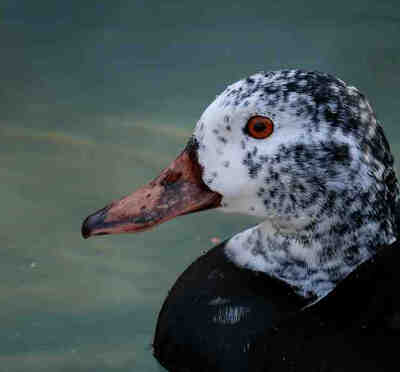
Cairina scutulata is a white-winged duck with no subspecies.The white-winged duck is classified together with the wart-nosed duck in the genus Periscopus. However, analysis of cytochrome b and NADH dehydrogenase subunit 2 in mitochondrial DNA and biogeographical distribution patterns indicate that t...
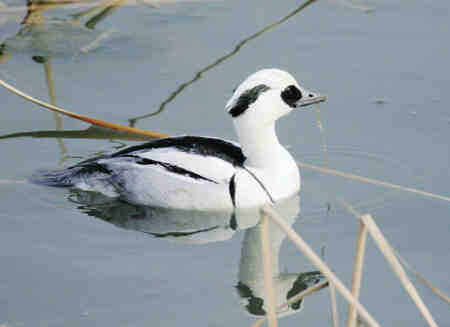
Merganser maculata is Smew, no subspecies.In spring, a large number of March-headed mergansers migrate north from their southern wintering grounds from mid-March to early April, while a small number migrate as late as early to mid-April. Autumn begins to move away from the breeding grounds in early...
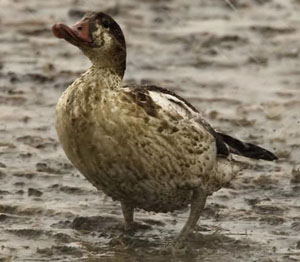
The crested duck (Tadorna cristata) is a group of birds of the family Anatidae, inhabiting lakes, rivers, ponds, salt ponds, estuarine marshes, and grasslands. Mixing with other duck species. They live in pairs during breeding period and in family groups and small groups during non-breeding period....
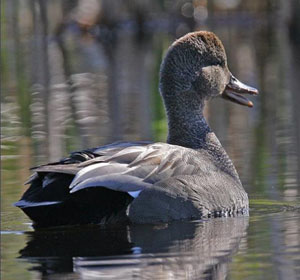
Anas strepera (Anas strepera) is a medium-sized duck that is slightly smaller than domestic ducks, often living in small flocks, and likes to mingle with other wild ducks. Sex timid and alert, when there is danger immediately rushed out of the water grass. Flying extremely fast, the wings flap fast...
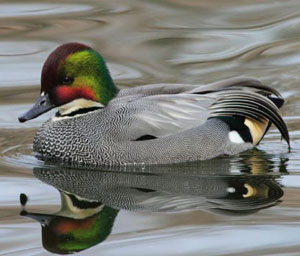
Ribbed ducks (Anas falcata) are medium-sized ducks, slightly smaller than domestic ducks, and often live in pairs or small flocks, including large flocks of 10 to dozens of individuals during the winter and migration seasons. Sex timid and alert, during the day more in the open lake, river, sandbank...
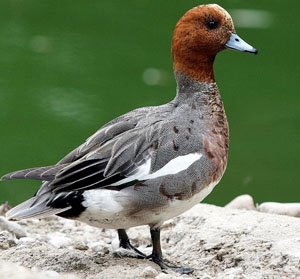
Red-necked ducks are medium-sized ducks, smaller than domestic ducks and about the same size as ribbed ducks. They often move in groups and mix with other ducks except during breeding periods. Good at swimming and diving. Happy often put the tail up, head bent to the chest. The flight is fast and po...
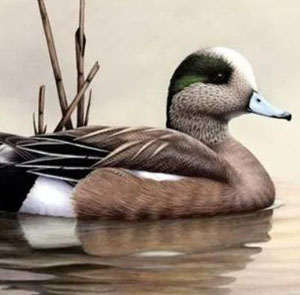
Green brow duck is a river duck, also known as grape breast duck. Medium sized, much like the red-necked duck but slightly larger. The environment is often the same as that of the red-necked duck. In winter, it is found in lake areas, wetlands, freshwater rivers, lakes and coastal agricultural areas...
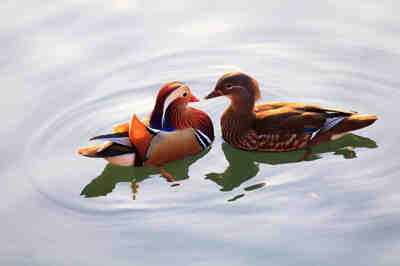
Mandarin Duck, no subspecies.Mandarin ducks migrate to their breeding grounds in the northeast at the end of March and the beginning of April, and leave their breeding grounds in late September and early October. When migrating in groups, often in small groups of 7-8 or more than 10 birds, sometimes...
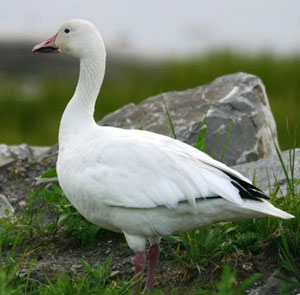
Snow geese are large, individual birds of the genus Amens. They live in groups ranging from a few to thousands of individuals. When flying into an orderly queue, there are a zigzag, herringbone, etc. In monogamy, both sexes participate in the rearing of chicks.During the breeding season, snow geese...
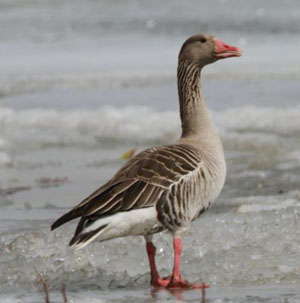
Gray geese move in groups, usually consisting of tens, hundreds, or even thousands, except during breeding, especially during migration. He is flexible in walking on the ground, agile in action, and often stands on one foot when resting. Swimming and diving are good, but can not last long, rarely di...
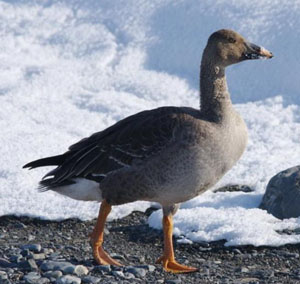
The short-billed bean goose is a species of anseriidae bird that breeds in northern Siberia. The species is considered different from the bean geese by the American Ornithological Society and the International Association of Ornithologists, but the British Ornithological Society considers the two as...
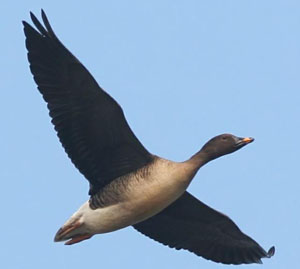
Wild goose is a large goose, love to cluster, except the breeding period, often move in groups. Especially the migration season, often integrated tens, hundreds, or even thousands of large groups, led by an experienced head goose, the formation is constantly changing, sometimes into a "people...

There is no subspecies of Whooper Swan.The four kinds of white whooper swans distributed in the northern hemisphere have long been recognized by people. Due to their white feathers, beautiful body, appealing cry and loyal behavior, the white whooper swan is regarded as a symbol of purity, loyalty an...
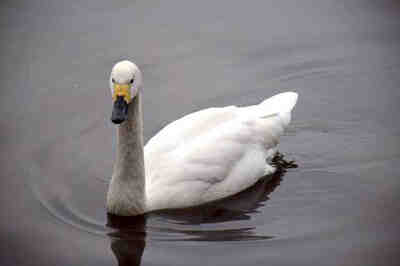
The cygnet, known as Tundra Swan, has three subspecies and is a large waterfowl of the genus Cygnus in the family Anatidae.Cygnets like to cluster, and often show small or family group activities except during the breeding period. They sometimes mingle with whooper swans and move with extreme cautio...
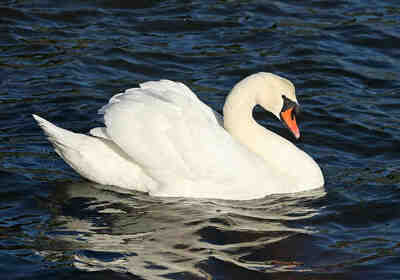
Mute Swan foreign name Mute Swan, no subspecies, is a large swimming bird.Mute swans moved to the south from the end of September to the middle of October for winter, and in the spring, they moved to the north in mid-late February, in small groups and family groups, mostly along lakes, rivers and ot...
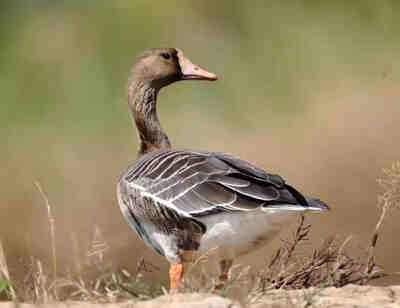
Lesser White-fronted Goose, no subspecies.Small white-fronted geese leave their breeding grounds and migrate to their wintering grounds from early to mid to late September every year, and usually arrive in Northeast China from early to mid to late October. Some arrived in China as early as the end o...
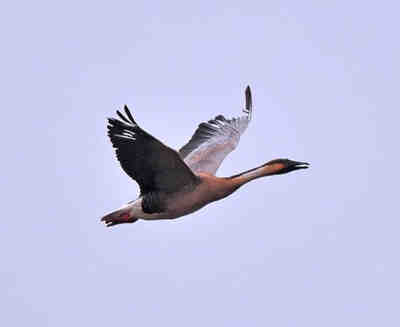
Swan Goose, with no subspecies, is a large waterfowl.From late September to late October every year, a large number of swan geese begin to migrate from their breeding grounds to their wintering grounds, and some begin to migrate as early as early to mid-September. Migrations often involve large grou...
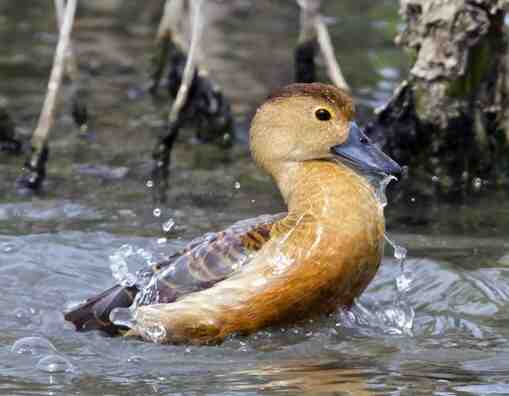
The Lesser Whistling-duck is a small and medium-sized duck with no subspecies.Chestnut duck breeds mainly in the south of China. It is a summer migratory bird in the middle and lower reaches of the Yangtze River. In Yunnan, Guangxi, Guangdong and Fujian regions, some are resident birds, some are sum...
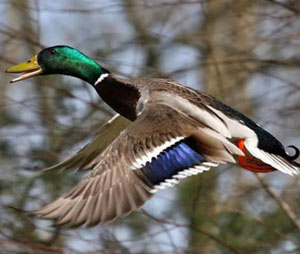
Mallard ducks are large ducks, similar in size and appearance to domestic ducks. In addition to the breeding period, they often move in groups, especially during migration and wintering, often integrating tens, hundreds or even thousands of large groups. Or swim on the water, or roost on the beach o...
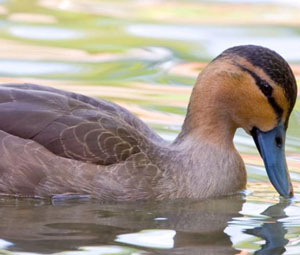
The brown necked duck (Anas luzonica) belongs to the family Anatidae. It is commonly found in swamps, rivers, lakes, ponds and estuaries. It sounds like a mallard but rougher. Most of the activities are in the wild grass in the marsh area near the water. It mainly floats on the surface of the water...